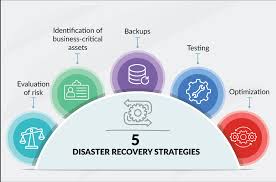Sample Cyber Security Disaster Recovery Plan, In today’s digital landscape, the threat of cyber attacks looms larger than ever. Organizations must be prepared not only to prevent breaches but also to respond effectively when incidents occur. A well-crafted sample cyber security disaster recovery plan is essential for ensuring business continuity, minimizing downtime, and protecting sensitive information. Below is a guide on creating a robust disaster recovery plan tailored for cyber security incidents.
1. Understanding Cyber Security Risks
Before developing a disaster recovery plan, it’s crucial to understand the types of cyber threats that could impact your organization. Common risks include:
- Malware Attacks: Malicious software that disrupts or damages systems.
- Phishing Scams: Attempts to deceive employees into providing sensitive information.
- Ransomware: Malware that encrypts files and demands a ransom for decryption.
- Data Breaches: Unauthorized access to sensitive information.
Identifying these risks allows organizations to prioritize their recovery efforts and allocate resources effectively.
2. Establishing a Disaster Recovery Team
A successful recovery plan requires a dedicated team responsible for its implementation. This team should include:
- IT Personnel: To manage technical aspects of recovery.
- Cyber Security Experts: To assess the damage and implement security measures.
- Communication Officers: To manage internal and external communications during a crisis.
- Legal Advisors: To navigate compliance and legal ramifications.
Assign roles and responsibilities to ensure a coordinated response.
3. Creating the Recovery Plan
A sample cyber security disaster recovery plan should include the following key components:
- Incident Response Procedures: Outline steps to take when a cyber incident occurs. This may include isolating affected systems, assessing damage, and notifying stakeholders.
- Data Backup Strategies: Regularly back up data using secure, offsite solutions. Ensure that backups are tested and can be restored quickly.
- System Restoration Protocols: Detail the process for restoring systems to normal operations, including reinstalling software, applying security patches, and verifying data integrity.
- Communication Plan: Establish a communication strategy to inform employees, clients, and stakeholders about the incident. Transparency is vital for maintaining trust.
- Training and Drills: Regularly train employees on the disaster recovery plan and conduct drills to test its effectiveness. This helps ensure everyone knows their roles during an actual incident.
4. Testing and Maintenance
A cyber security disaster recovery plan is only effective if it is regularly tested and updated. Conduct simulations to identify weaknesses in your plan and make necessary adjustments. Schedule periodic reviews of your plan to incorporate changes in technology, business operations, and emerging cyber threats.
5. Continuous Improvement
After a cyber incident, conduct a thorough post-mortem analysis to evaluate the response and recovery efforts. Identify lessons learned and areas for improvement. This process helps to strengthen the disaster recovery plan and enhance overall cyber security posture.
Conclusion
In an era where cyber threats are prevalent, having a sample cyber security disaster recovery plan is not just a precaution—it’s a necessity. By proactively preparing for potential incidents, organizations can minimize the impact of cyber attacks, protect their assets, and maintain business continuity. Investing time and resources into a comprehensive recovery plan is essential for navigating the complex landscape of cyber security threats effectively.
You Might Also Like These:
Understanding Cyber Recovery Forums Addiction: A Growing Concern
Cyber Recovery Down: Understanding the Causes and Solutions
Cyber Recovery Vault: A Key to Defending Against Ransomware and Data Breaches
What is Cyber Recovery? A Comprehensive Overview
Dell EMC Cyber Recovery Solution Guide: A Comprehensive Overview

